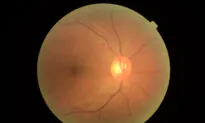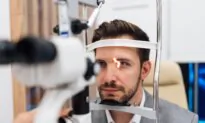Your eyes open a passageway from the outside world to your brain. Light coming into your eye must pass through the lens, a biconvex structure that bends the light to focus it on the retina, which is on the back inner wall of the eye. The image of the visual field that is projected onto the retina is upside-down and your brain re-orients the image. The seven million cone cells in the retina of each eye are divided into three types that detect either red, blue, or green wavelengths of light. Your eyes send the information about color from these cone cells to your brain, which processes the visual image into a rainbow of colors. Researchers believe humans can see one to 10 million shades of color. Your retinas also have about 100 million rod cells—cells that are extremely sensitive to ambient light and help you to see in the dark. The eyes need proper nutrition and protection from mechanical and chemical insult. Carotenoids (pigments found in plants) are vital to eye health. Lutein and zeaxanthin are the most important carotenoids for the retina. Other nutrients, such as omega-3 fatty acids, zinc, and citamins C and E may help protect against degenerative vision problems. Not smoking, wearing sunglasses, and getting yearly eye exams are important steps in maintaining healthy eyes.

























